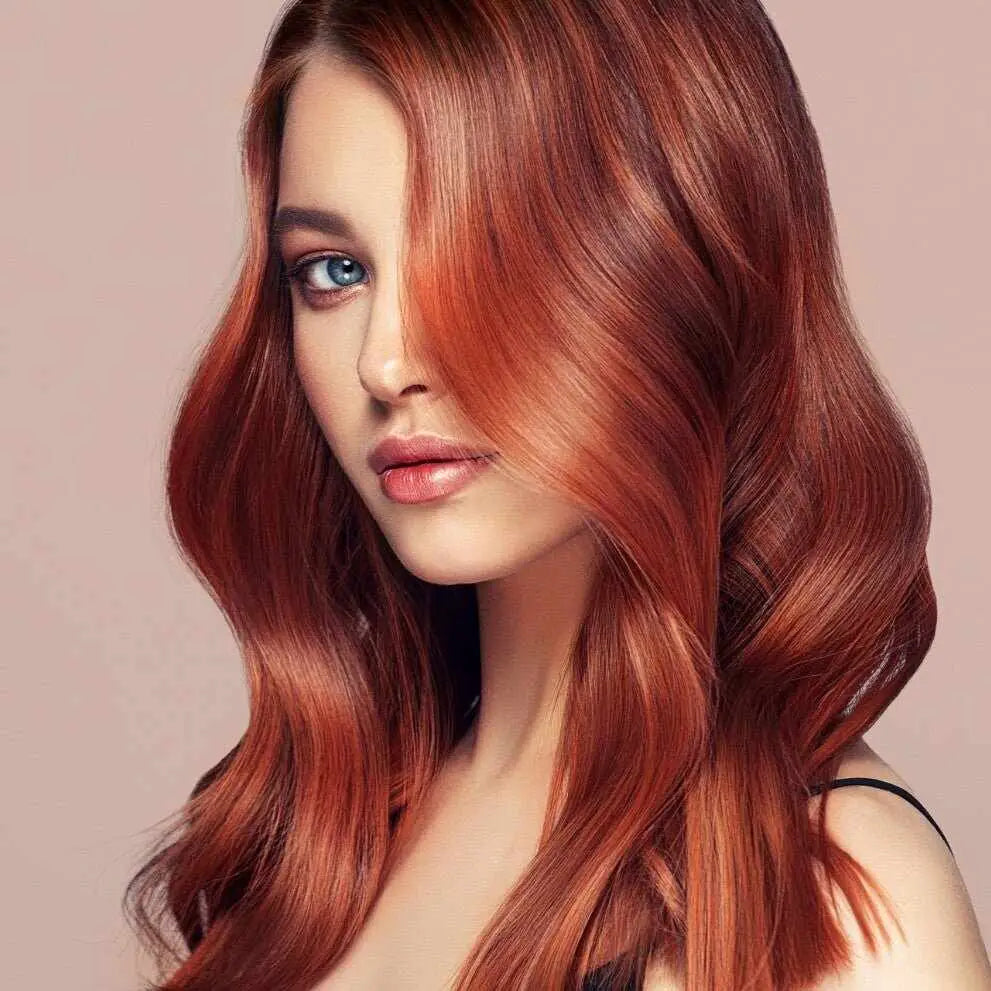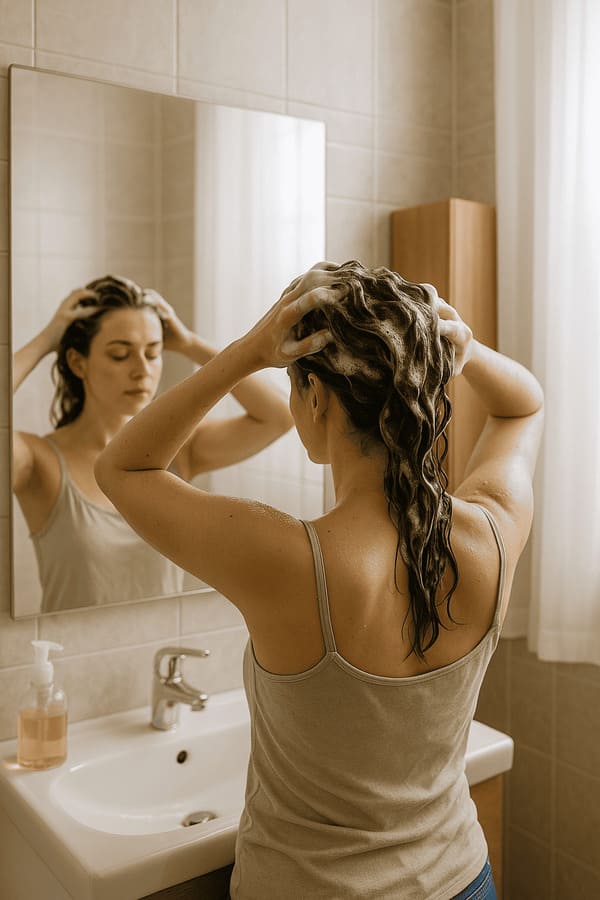Henna for hair is a product that has been used for hair care for thousands of years: traces of this colouring plant have even been found in the hair of the mummy of Pharaoh Ramses!
In Africa, India and in the Eastern world in general, henna is used to decorate hands, nails, feet and hair, especially in preparation for important ceremonies, such as weddings.
In the West, henna for hair was already used by Roman matrons, who chose it to color their hair and, even today, we can use this plant to care for our hair naturally and without chemical dyes .
Index
What is henna?
Henna is obtained from Lawsonia Inermis , a plant that grows tall and lush in hot and dry climates, such as Africa, the Middle East and India. Its leaves contain a coloring pigment, Lawsone, which can dye hair copper, light red or mahogany, depending on individual variables such as the starting color and the keratin structure, but also on the type of henna used.
Henna acquires different characteristics depending on the climate and soil and each crop is unique and different from the others. The percentage of lawsone contained in the leaves ranges from 1 to 5% and the greater the amount of pigment, the darker and more intense the color obtained .
Usually, henna leaves with the highest quantity of Lawsone are reserved for body art but, it is also excellent for hair, thanks to the higher quantity of pigment and the finer pulverization, which allows to obtain a creamier and more spreadable compound .
How it works
The shaft of our hair is made up of lipids, minerals and a protein, keratin , which makes it strong, strong and elastic. The colour is determined by a pigment, melanin , which is found in the cortex, the thickest and most fibrous part of the hair; this area is protected by a thin layer of cells, the cuticle, which protects it from external aggressions and stress.
When we use a chemical dye on our hair, it works mainly thanks to two main ingredients, ammonia and hydrogen peroxide, which make the hair swell by opening its cuticles and depriving it of its original color, destroying the melanin inside it to "replace" it with new colored molecules that will be in all respects the result of the chosen dye.
Hair coloring with henna, on the other hand, has a different process.
When we apply the creamy compound obtained by simply mixing the henna powder with warm water, the color slowly migrates inside the cortex of the hair, where it binds with the keratin naturally contained within it.
The final color we will get will therefore be a unique and personalized color, created just for us by nature, from the mix of our natural coloring and the tone of the henna. Furthermore, with the succession of treatments, the hair will be increasingly thicker, stronger and more voluminous .
How to dye your hair with henna
Using henna to dye your hair is very simple and I will explain how to do it step by step.
But first a little clarification : henna, the real henna, dyes hair only red, with all its shades. Those we find on the market with the words black henna, blond henna, brown henna, are actually mixes of henna and other dyeing herbs that allow you to cover gray hair and obtain your favorite color.
Dyeing your hair with henna or a mix of henna and herbal dyes is very simple and, using the right precautions, you will not notice any difference compared to applying a chemical dye from the supermarket.
1. Prepare the mixture
A good quality henna powder looks like a fine, smooth powder. Mix the henna powder with hot water, stirring well to create a smooth paste with the consistency of yogurt.
Let the mixture rest for a few minutes and proceed with the application. In some cases it may be necessary to let the product oxidize for a few hours.
2. Apply
You can apply henna like a normal dye, using a brush or even your hands. Start from the roots and continue along the lengths, covering all of your hair well. Always use gloves to avoid coloring your hands and nails too!
When you're done, cover your hair with cling film or, better yet, a plastic cap that can be washed and reused, for a zero-waste approach!
Wear a warm towel or hat, to help the henna penetrate your hair better and work its magic!
3. Wait
The exposure time for dyeing hair with henna varies from hair to hair and depending on the result we want to achieve: longer exposure times will give life to more intense and deep colors, while a short exposure will give us warm and coppery highlights.
In general, to obtain a good result it is advisable to leave the product on for at least two hours but, if we want a very cold colour, we can also leave it on for 6-8 hours.
4. Rinse
Wash off the henna with warm water, rinsing until the water runs clear. It is best not to use shampoo at this stage, to avoid discharging the color already.
However, if you feel like you haven’t rinsed all the powder out properly, you can use a diluted shampoo to remove everything and avoid itching on your scalp in the following days.
If you need to, use conditioner to untangle your hair and eliminate excess compound. The ideal is a light conditioner, with a formula containing few oils, which allows you to eliminate residues and make your hair softer, without affecting the color obtained, since the oils make the henna discharge more quickly. For this purpose, try Yuniwa Cosmetics Hair Conditioner , which has a light formula and thanks to its illuminating properties, will allow you to obtain even shinier and healthier hair at the end of the treatment.
If you are not satisfied with the color, wait a few days before proceeding with a new application: in fact, the henna continues to oxidize for about 3 days after the treatment and during this period the color will change slightly before settling permanently.
Remember that close applications will stratify the color, turning to darker tones; if you prefer to keep lighter and brighter tones we recommend alternating the henna dye with reflecting treatments such as sherazade.
The best red hennas
Want to get your dream red ? Here are our favorite red hennas, perfect for ease of use and the results they allow you to achieve!
Ready-made powders with a fine texture, which can be easily mixed without leaving lumps, with only natural ingredients, for beautiful and healthy hair!
Choose your favorite shade of red: Titian red, cool red, warm red, copper, cherry and much more!
Do you have questions about the world of natural dyes? Discover in this article all the most requested FAQs about henna !
Visit our section dedicated to all the guides for henna and dyeing herbs to discover all our tips on natural hair coloring!
[ApSC sc_key=sc3148331291][/ApSC]
















1 comment
hi